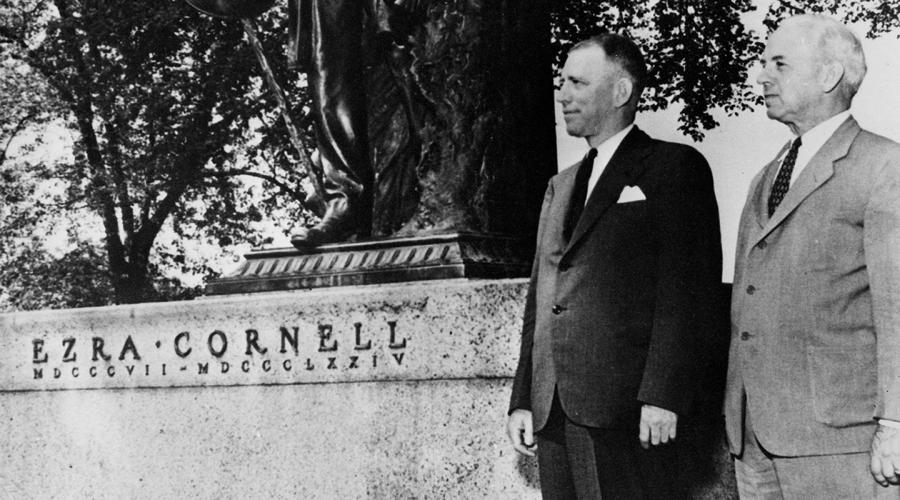
A Dream Unfolds
The rich history of the ILR School, shaping labor-management values and impacting lives right from its start 70 years ago, is tied to the social, economic and political landscapes of the Great Depression.
That's when U.S. Labor Secretary Frances Perkins, who later taught at ILR, and others led the nation into dramatic workplace change.
Legislation such as the Fair Labor Standards Act, securing wages and hours, and the National Labor Relations Act, protecting workers' rights to organize, reshaped the employer-employee relationship.
Irving Ives, raised in Chenango County and schooled at Hamilton College – both in upstate New York, believed that a thriving American workplace would demand education of both labor and management.
A Cornell school would help lead them, Ives thought. In the 1930s, he was elected to the New York State Assembly and began building buy-in for the idea.
The prospect of an educational institution devoted to labor and industrial relations was controversial in a number of spheres, including the labor movement, Albany political circles and Cornell.
Ives had support in key areas, though.
George Meany, a president of the New York State Federation of Labor who later became the American Federation of Labor’s chief, coached Ives in the ways of labor.
William B. Groat, a Queens lawyer and political insider, identified Ives' potential for leadership. Ives also built a bond of trust with Cornell President Edmund Ezra Day.
In 1944, as fears grew that widespread strikes would resume when World War II troops returned to stateside jobs, state legislators voted to create the New York State School of Industrial and Labor Relations.
Cornell won in its bid against Union College and Syracuse University for hosting rights and Ives was named to lead the school.
Jean McKelvey and Maurice Neufeld were appointed the first members of a world-class faculty that continues to shape societal values.
On Nov. 2, 1945, ILR held its first classes with 107 undergraduates — all transfer students — and 11 graduate students. More than half of the enrollees were World War II veterans.
Cornell, celebrating its sesquicentennial as ILR marks its 70th anniversary, was an 80-year-old institution when the new school opened in borrowed classrooms in Warren Hall on the Ag Quad.
ILR, as the school is now known, moved in 1946 to Quonset huts on what is now the Engineering Quad. That same year, Ives resigned as dean to run for a U.S. Senate seat, which he won.
Martin P. Catherwood, a Cornell public administration professor who had been on leave to serve as the state’s commerce commissioner, became ILR’s dean and stayed in that role for 11 years.
Now, eight decades after a small group of individuals dared to advance the world of work, the ILR School continues to prepare leaders, inform policy and improve working lives.